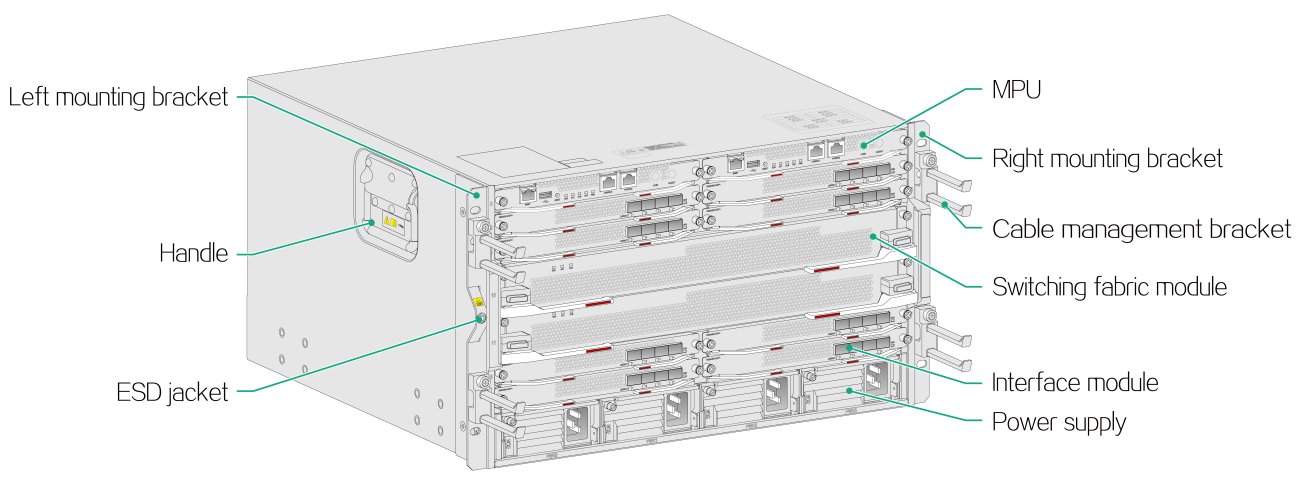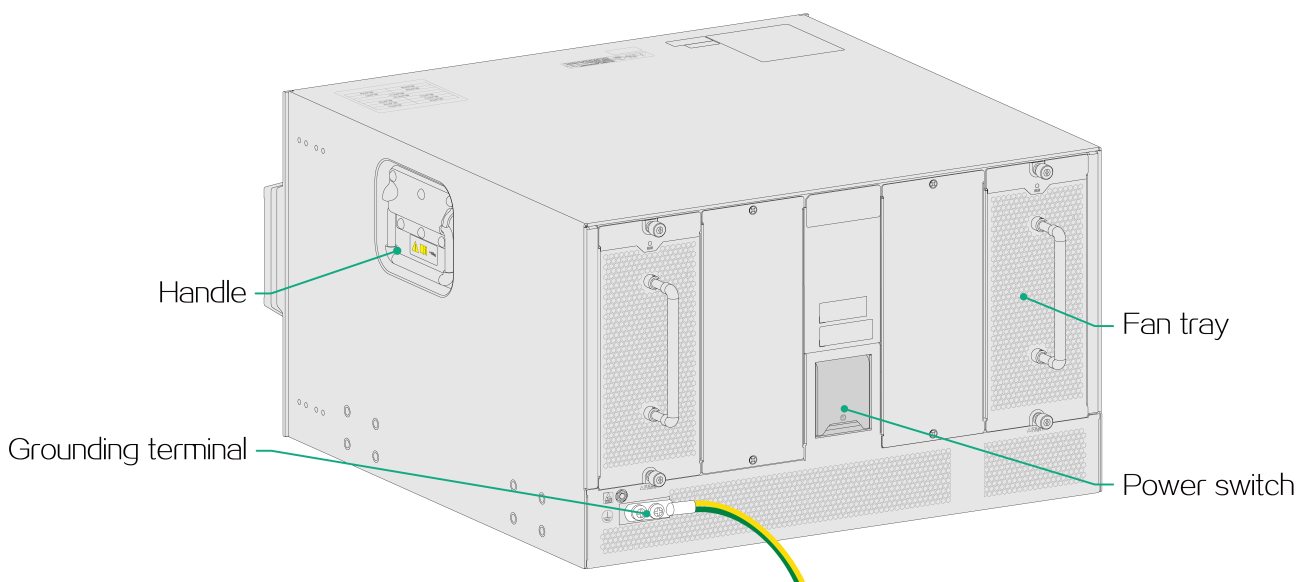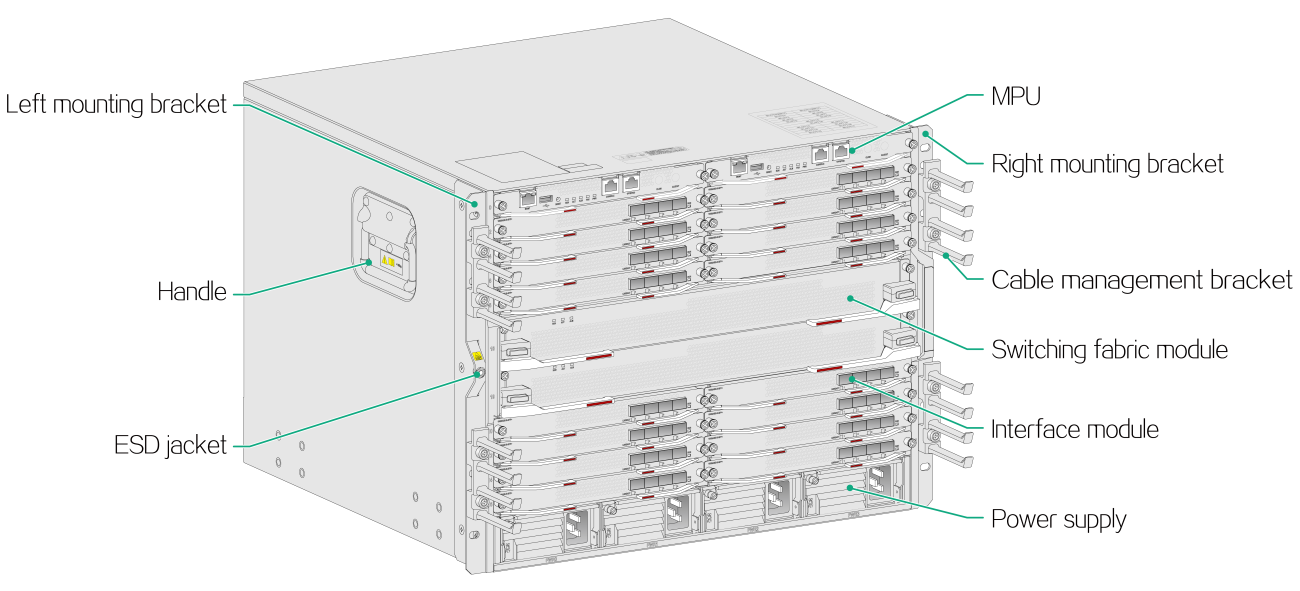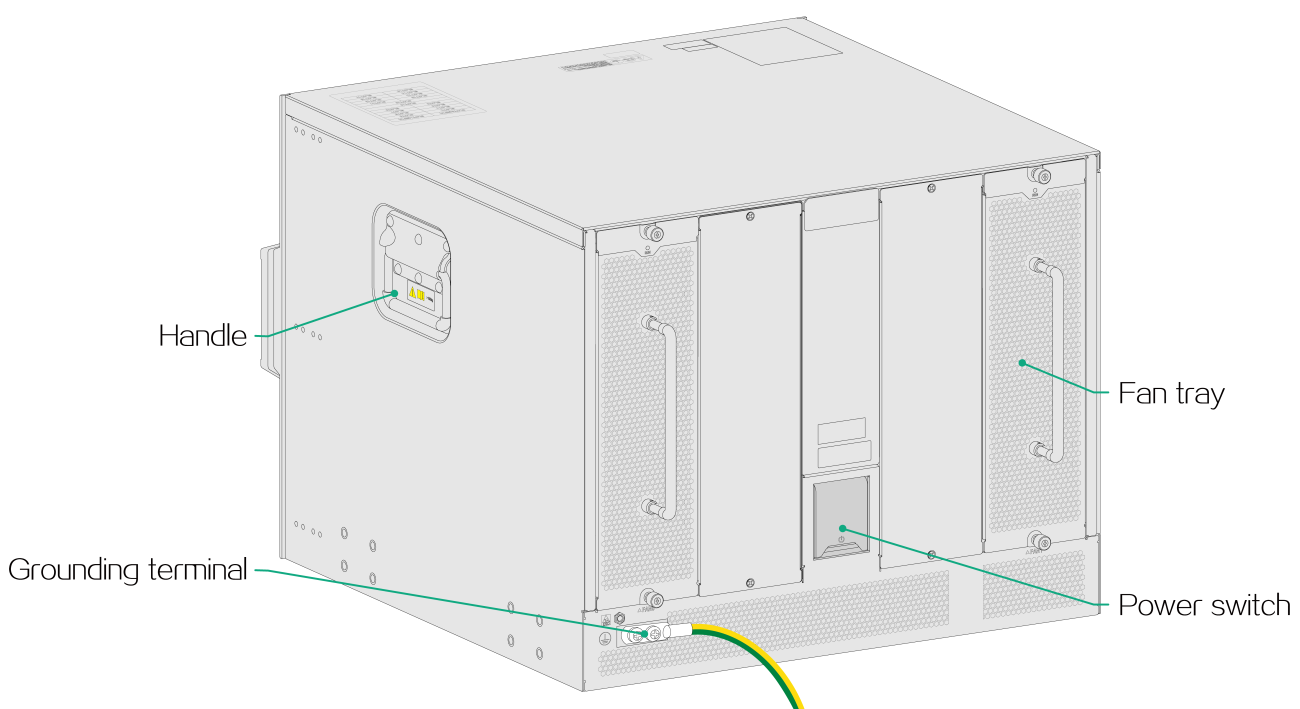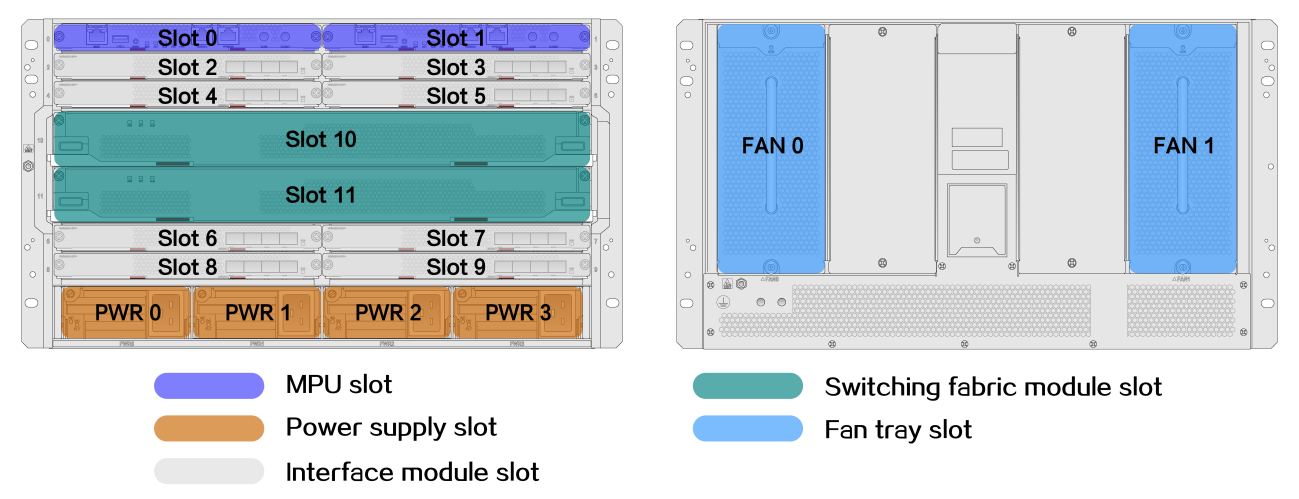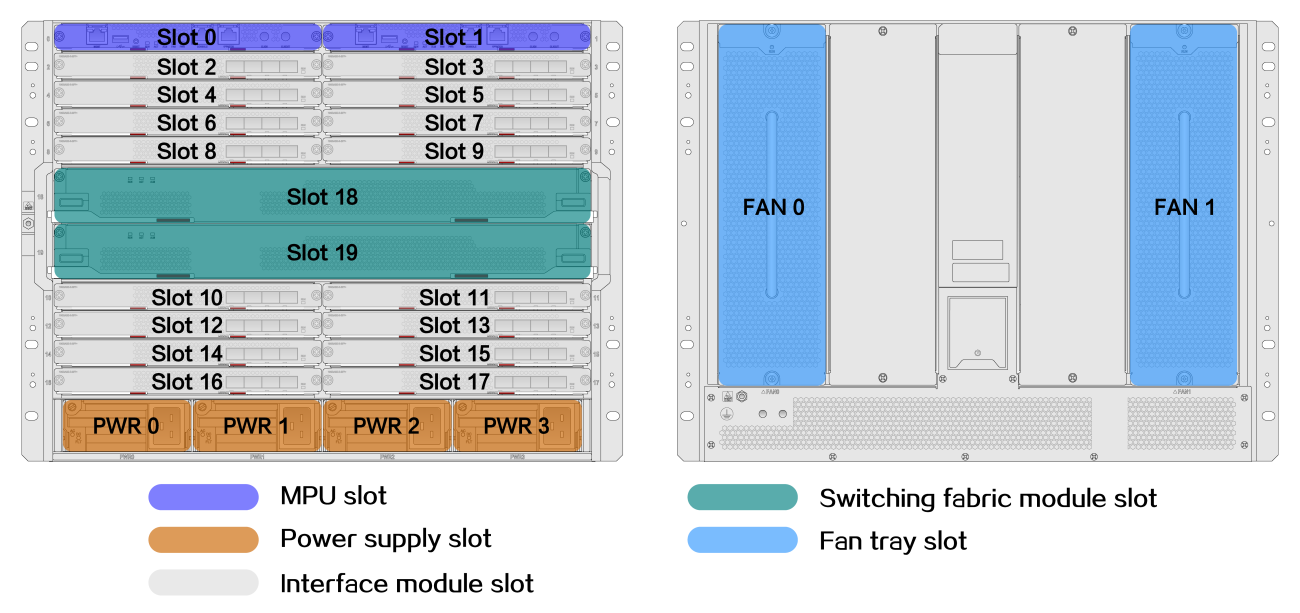- Table of Contents
- Related Documents
-
| Title | Size | Download |
|---|---|---|
| 01-About the router | 993.29 KB |
1 About the router
Chassis views
The chassis views are for illustration only.
The CR16000-M routers include the CR16000-M8 and CR16000-M16.
Figure1-1 CR16000-M8 front view
Figure1-2 CR16000-M8 rear view
Figure1-3 CR16000-M16 front view
Figure1-4 CR16000-M16 rear view
Slot arrangement and interface numbering
Slot arrangement
Figure1-5 CR16000-M8 slot arrangement
Figure1-6 CR16000-M16 slot arrangement
Interface numbering on interface modules
The interfaces on an interface module are numbered from top to down and from left to right.
Figure1-7 Interface numbering on a MIC-GP24L-M
Interface numbering
Conventions
The interfaces on the router are numbered in the interface-type slot/subslot/num format.
· interface-type—Interface type, for example, GigabitEthernet and POS.
· slot—Number of the slot where the module resides, as shown by the number in Figure1-5.
· subslot—Number of the slot where the interface subcard resides on the interface module. The number is fixed at 0.
· num—Number of the interface on the interface subcard or interface module.
|
|
NOTE: · For each port type, the number num starts from 1. · The slot number, subslot number, and port number of the network management port on an MPU are all 0. |
Example
The router has two MPUs installed. The management interface M-GigabitEthernet is numbered M-GigabitEthernet 0/0/0.
One MIC-XP4L-M interface module is installed in slot 3 of the router. Ten-GigabitEthernet interfaces on the interface module are numbered as following:
· Ten-GigabitEthernet 3/0/1
· Ten-GigabitEthernet 3/0/2
· Ten-GigabitEthernet 3/0/3
· Ten-GigabitEthernet 3/0/4
Technical specifications
Table1-1 Technical specifications
|
Item |
CR16000-M8 |
CR16000-M16 |
|
Dimensions (H × W × D) |
264 × 440 × 440 mm (10.39 × 17.32 × 17.32 in) |
353 × 440 × 440 mm (13.90 × 17.32 × 17.32 in) |
|
Weight (fully configured) |
≤ 66 kg (145.50 lb) |
≤ 81 kg (178.57 lb) |
|
Sound pressure level |
· Sound pressure level in the acceptable temperature range: 64.6 dBA · Sound pressure level when the fan tray operates at full speed: 76.8 dBA |
· Sound pressure level in the acceptable temperature range: 66.5 dBA · Sound pressure level when the fan tray operates at full speed: 79.7 dBA |
|
Router weight |
Chassis weight (including mounting brackets and filler panels) plus removable component weight (including modules, power supplies, fan trays, interface modules, and other removable components) |
|
|
System power consumption |
· Minimum system power consumption: static power consumption of all modules + minimum power consumption of all fan trays · Maximum system power consumption: dynamic power consumption of all modules + maximum power consumption of all fan trays For example, a CR16000-M8 router has two SR07MPUA3-M MPUs, two MIC-XP10L-M interface modules, one SFE-A switching fabric module, and two fan trays. The minimum power consumption of the router is 2 × 46+2 × 35 + 210 + 2 × 9 = 390 W. The maximum power consumption of the router is 2 × 53 + 2 × 50 + 280 + 2 × 95 = 676 W. For more information about the power consumption of cards, see "Technical specification" in "FRUs and compatibility matrixes." |
|
|
Heat dissipation (per hour) |
0.9 × system power consumption/0.9 × 3.4121 |
|
|
Temperature |
· Operating: 0°C to 45°C (32°F to 113°F) · Storage: –40°C to +70°C (–40°F to +158°F) |
|
|
Relative humidity |
· Operating: 5% RH to 95% RH (noncondensing) · Storage: 5% RH to 95% RH (noncondensing) |
|
|
|
NOTE: · Dimensions in the table are for the chassis only, excluding the mounting brackets, cable management brackets, modules, and power supplies. · Heat dissipation is measured in BTU/h. 1 W equals 3.4121 BTU/h. · The sound pressure levels are measured based on the method specified in ISO 7779 at bystander positions. |

